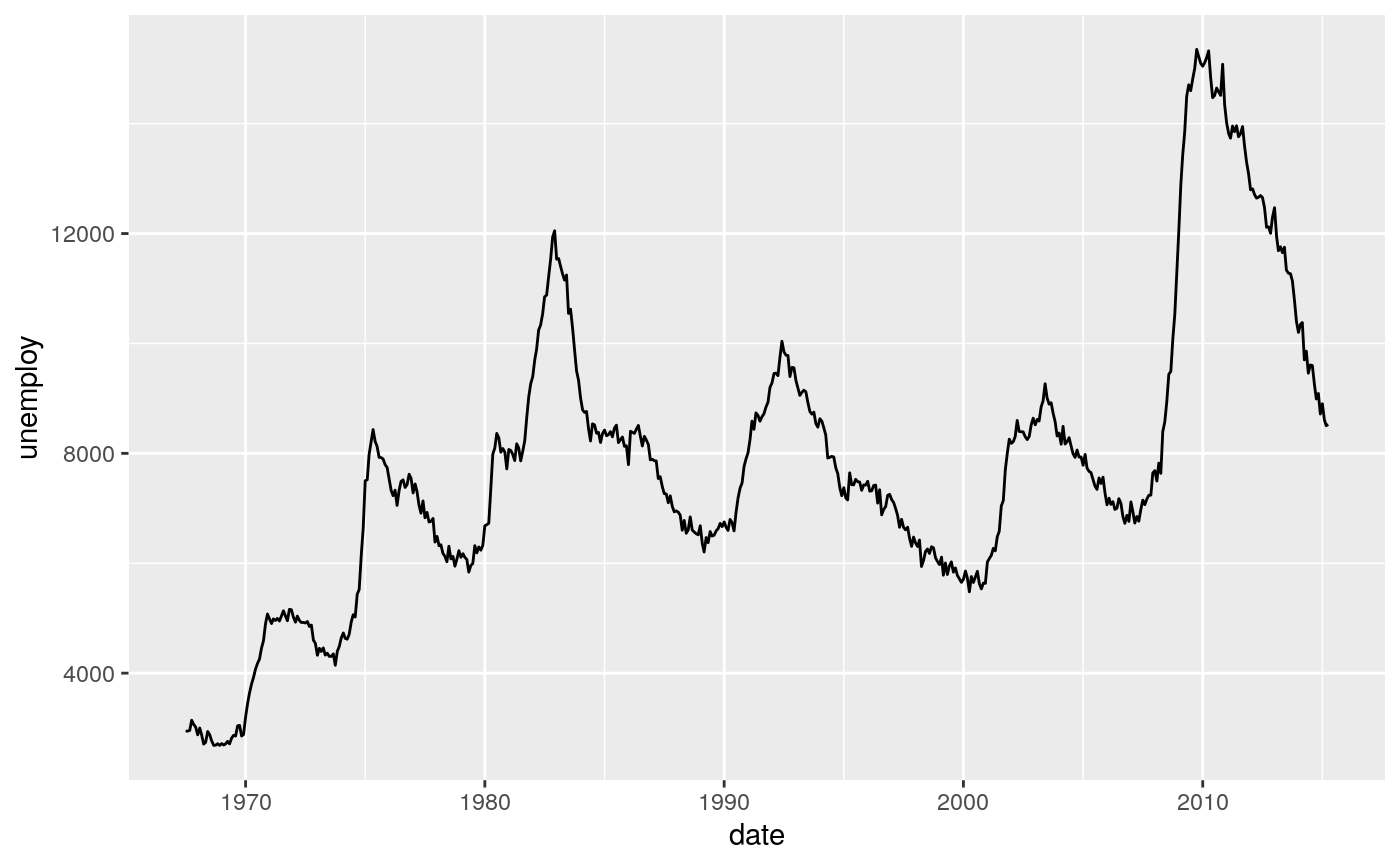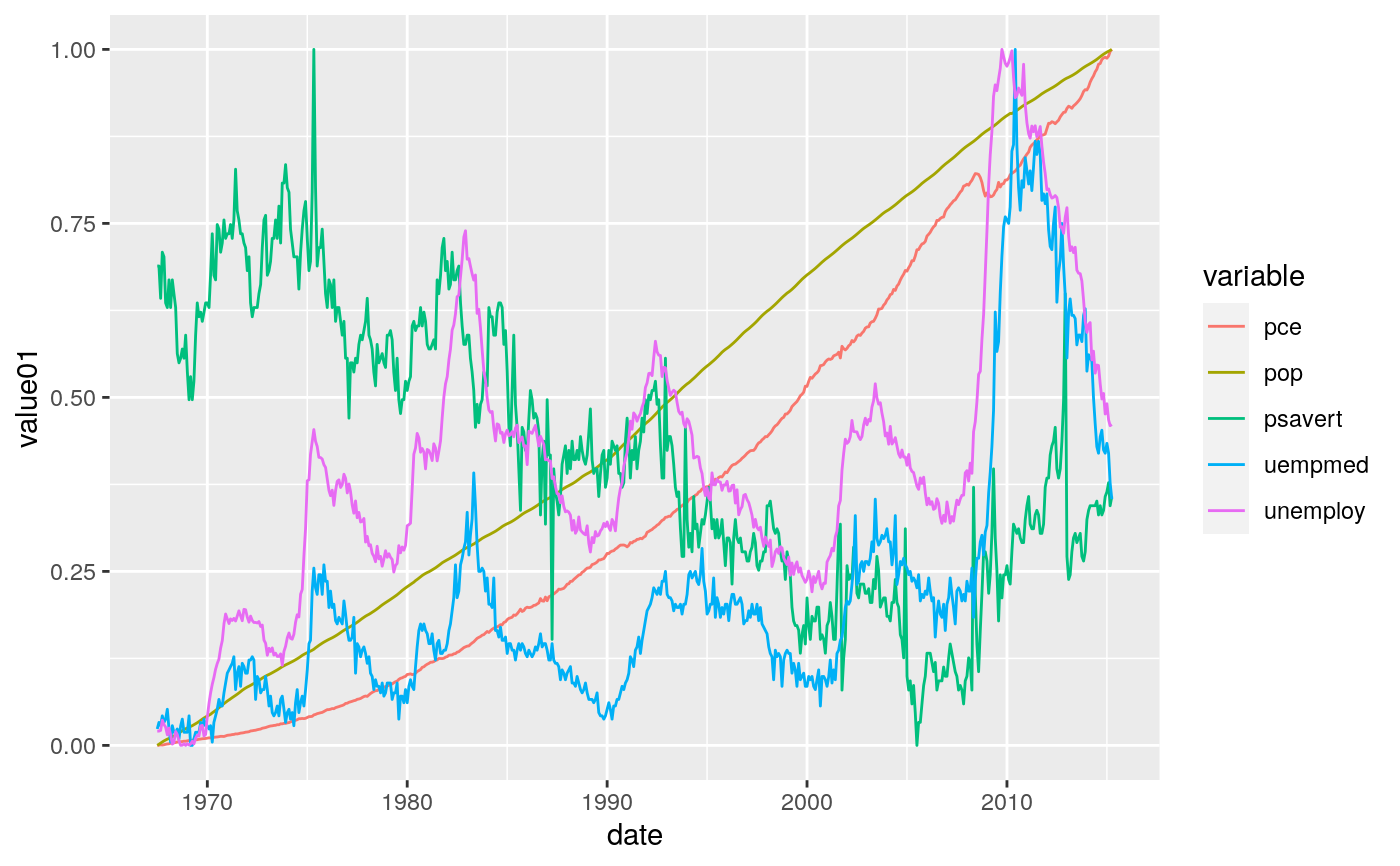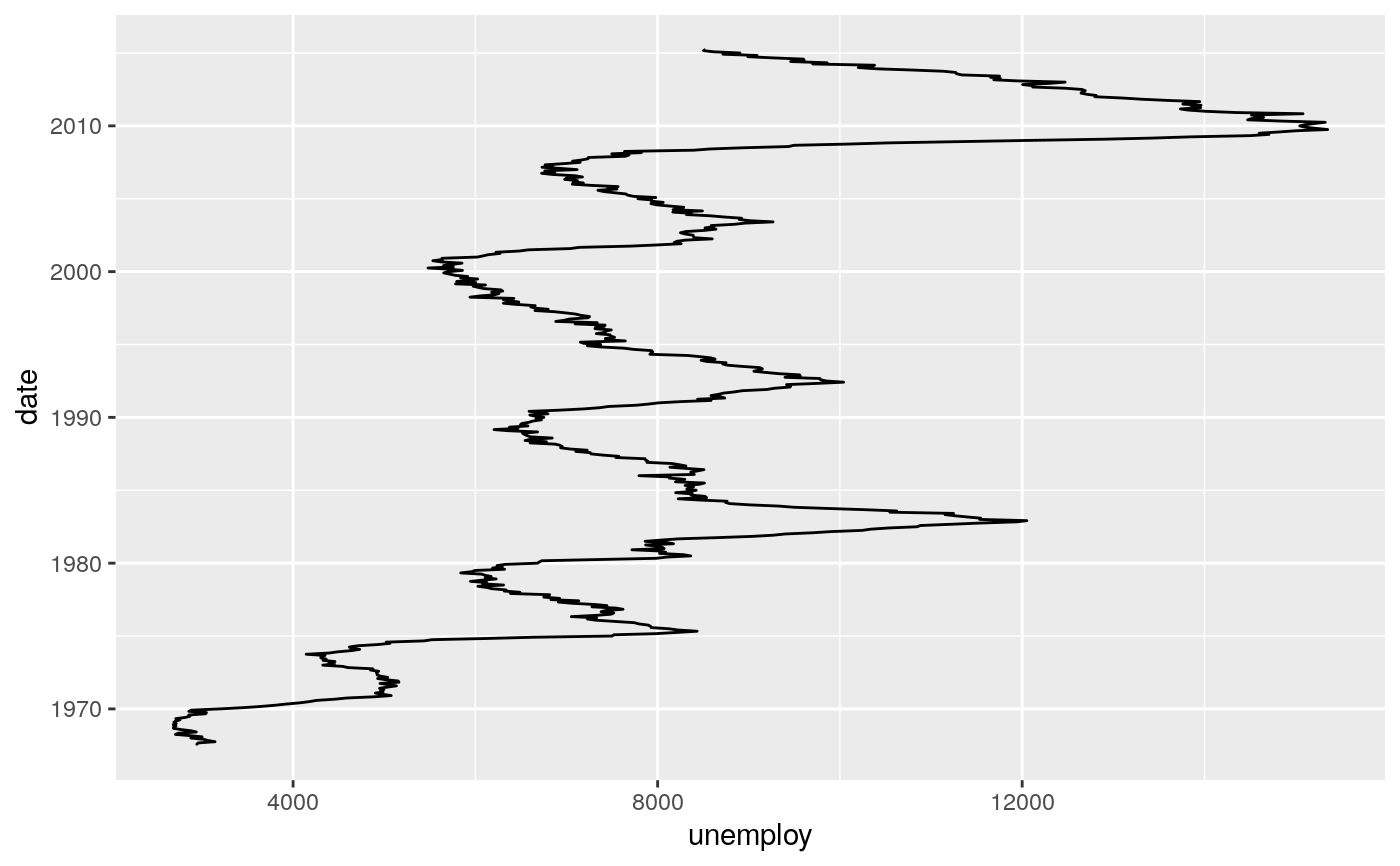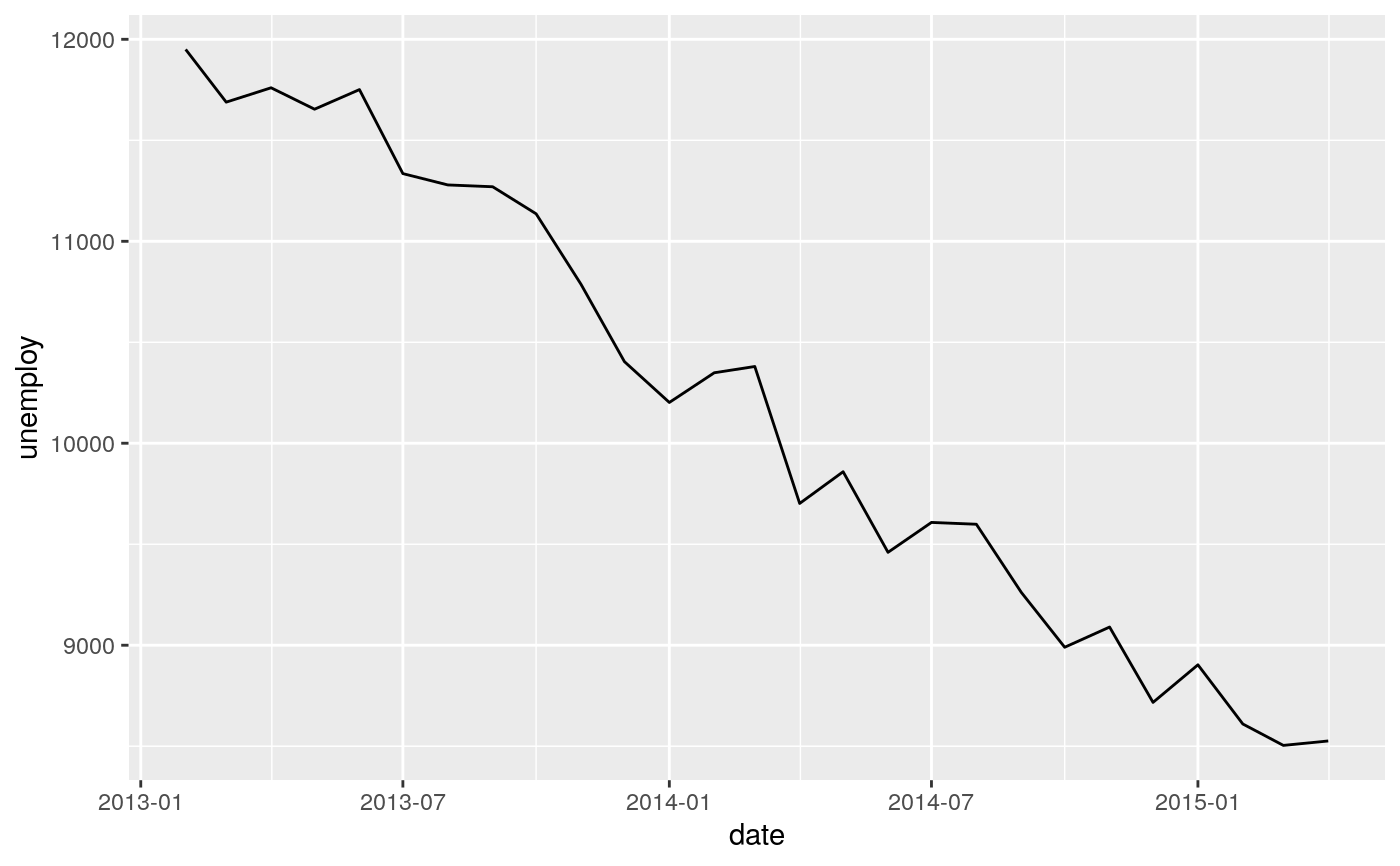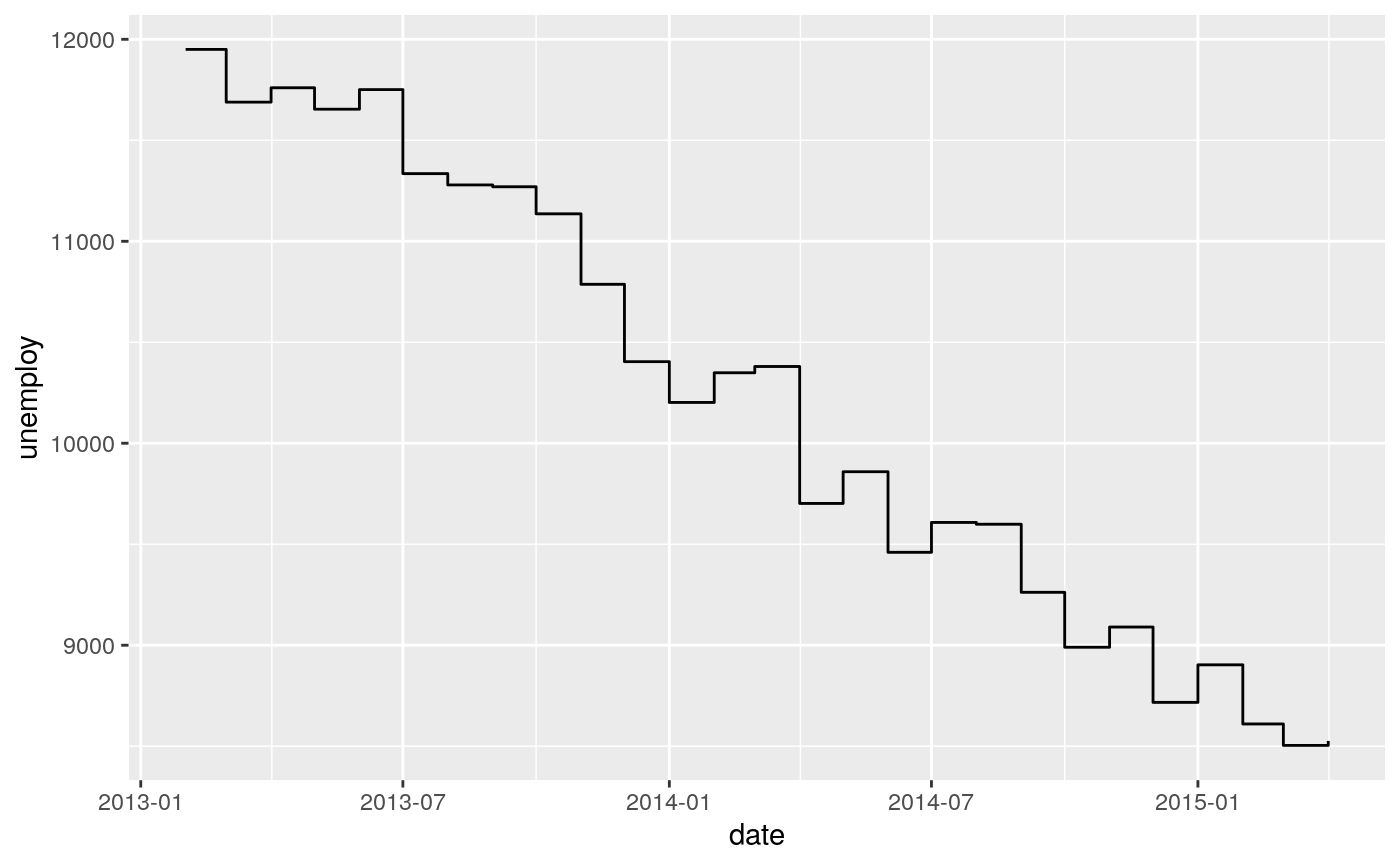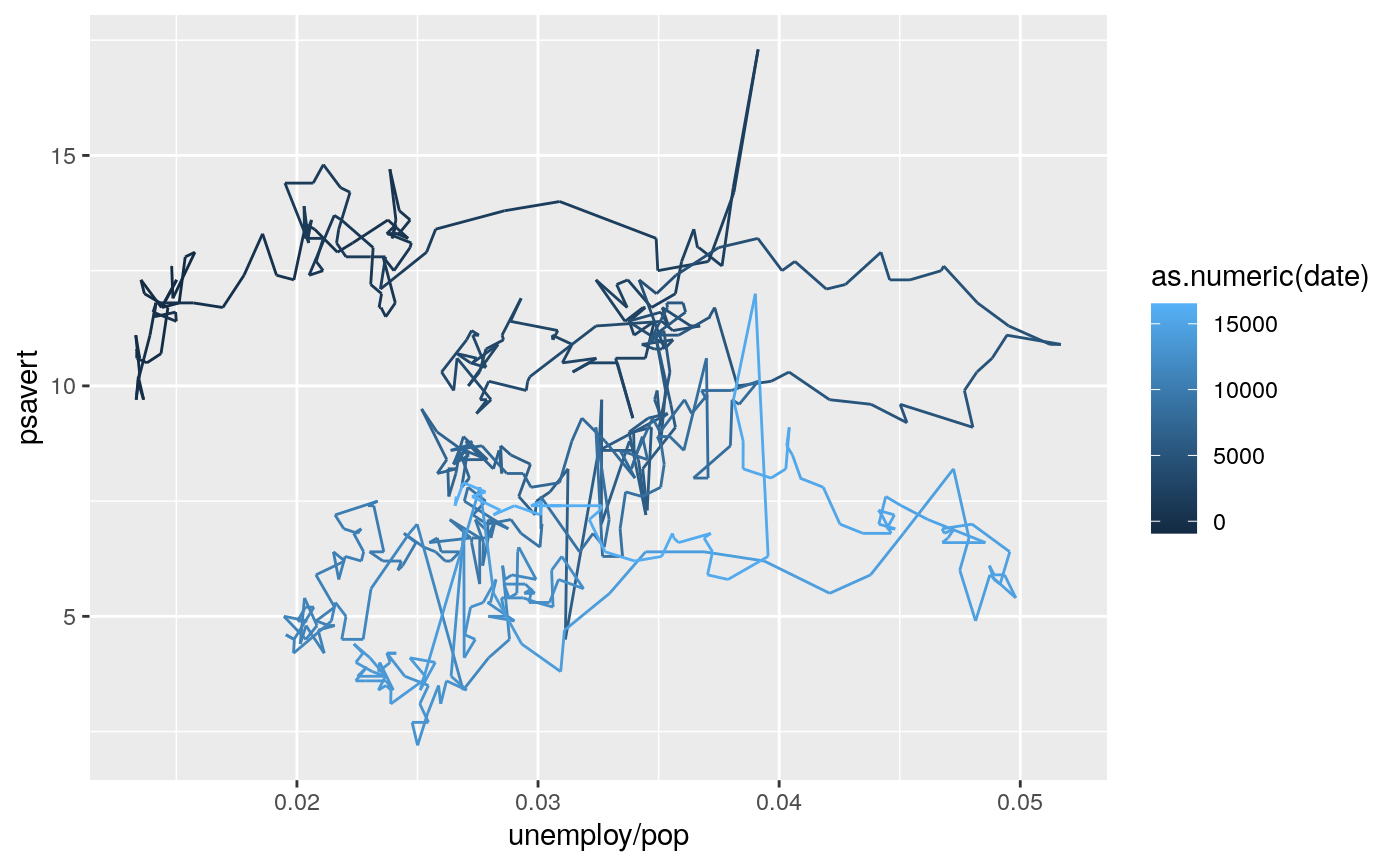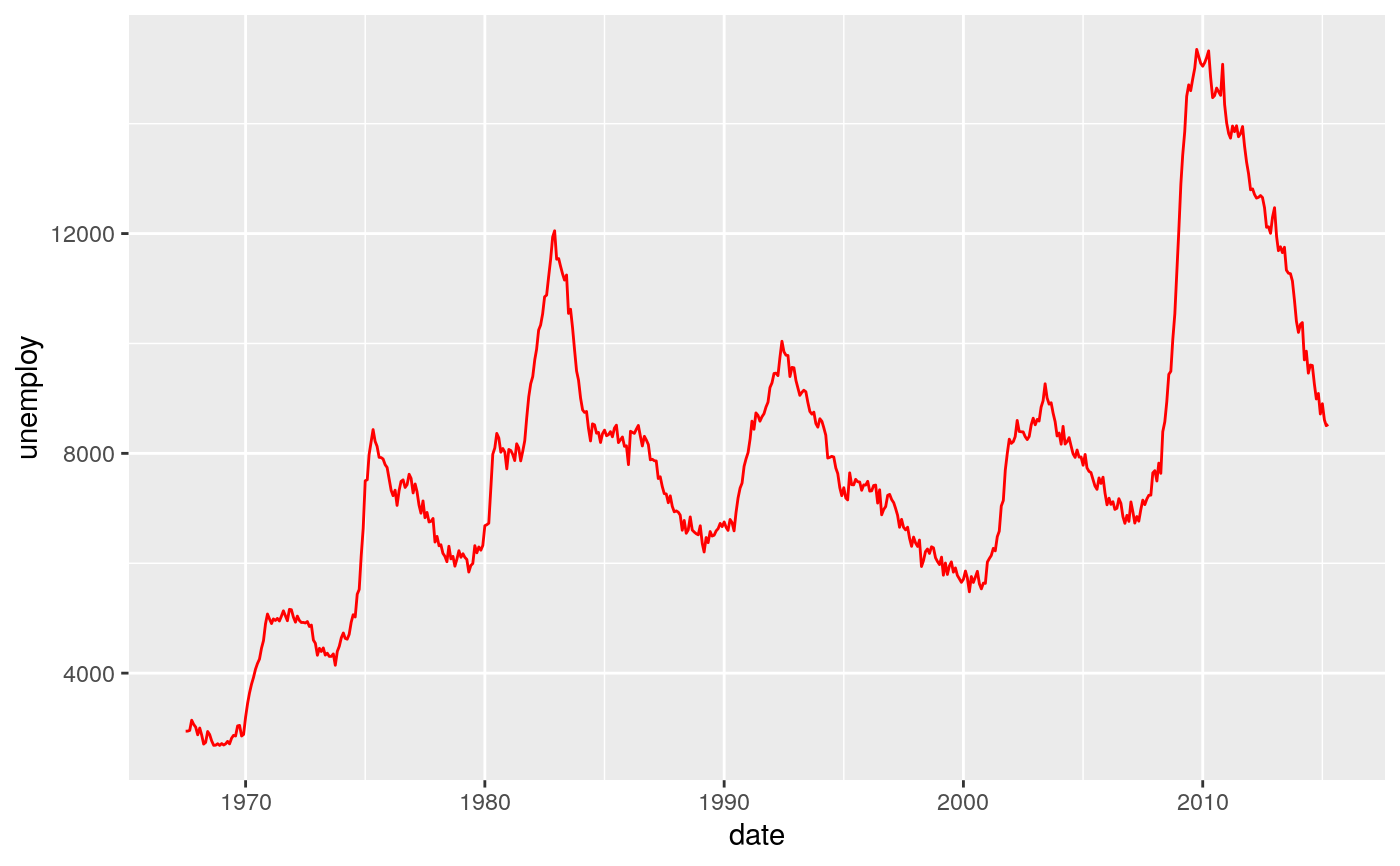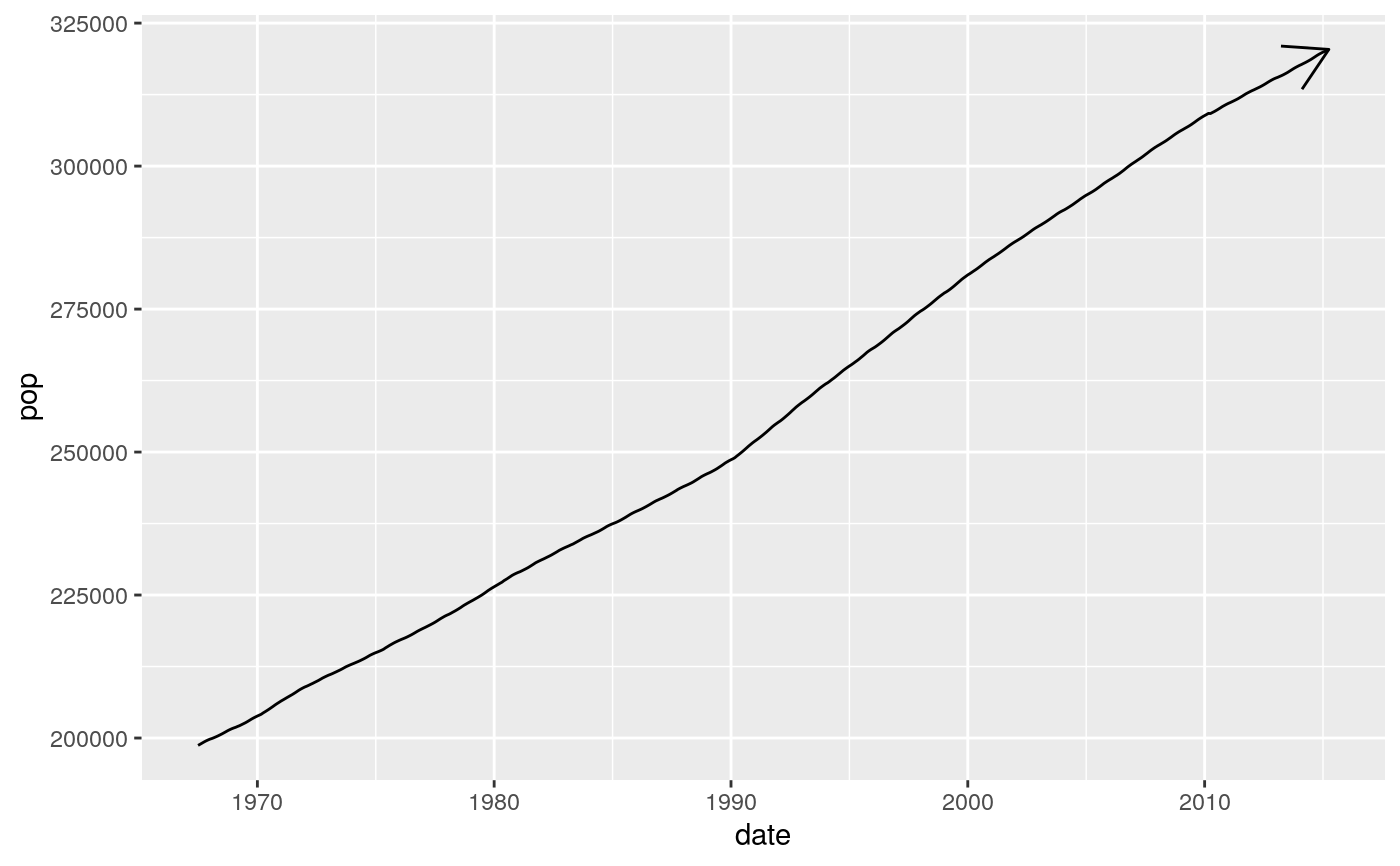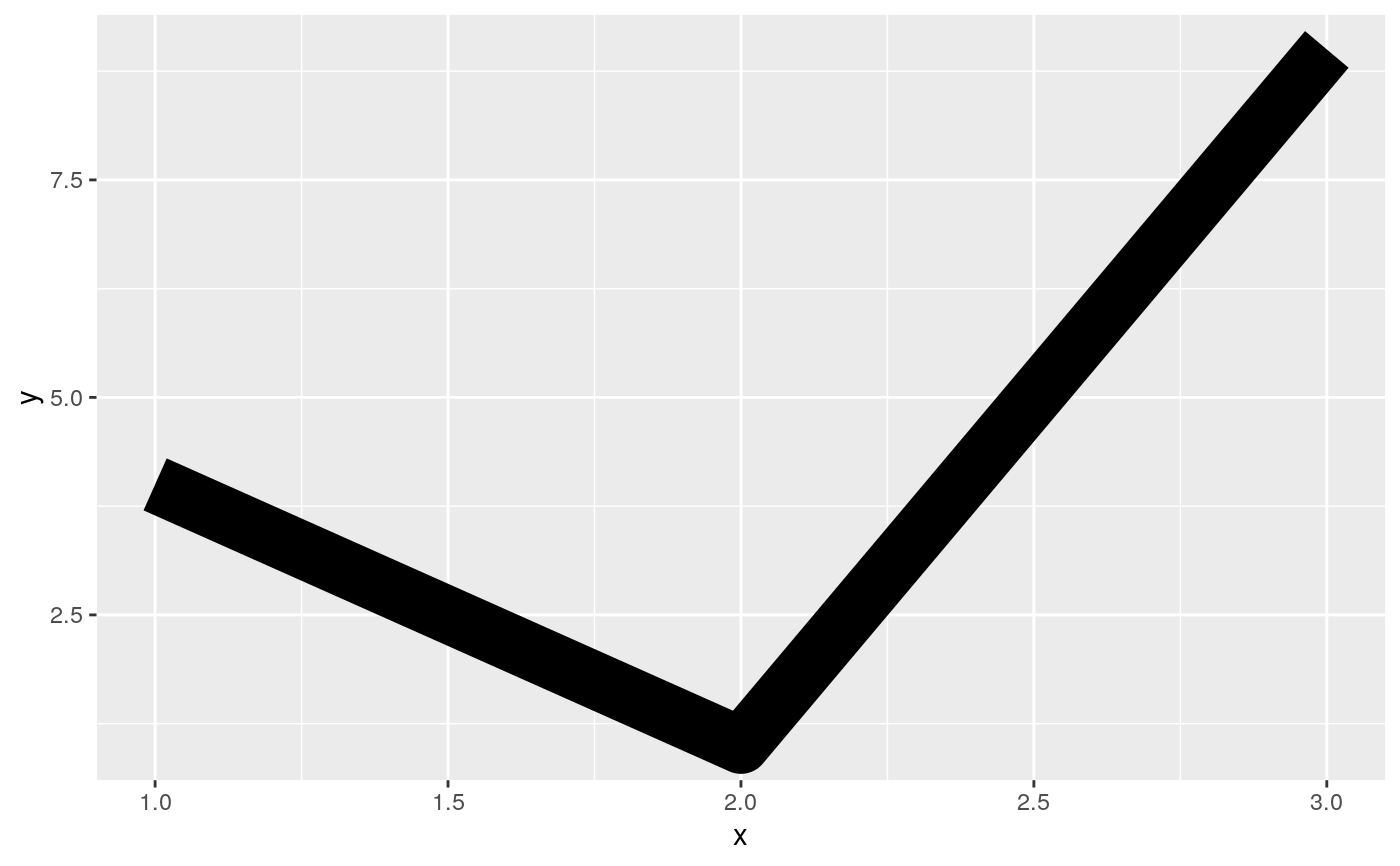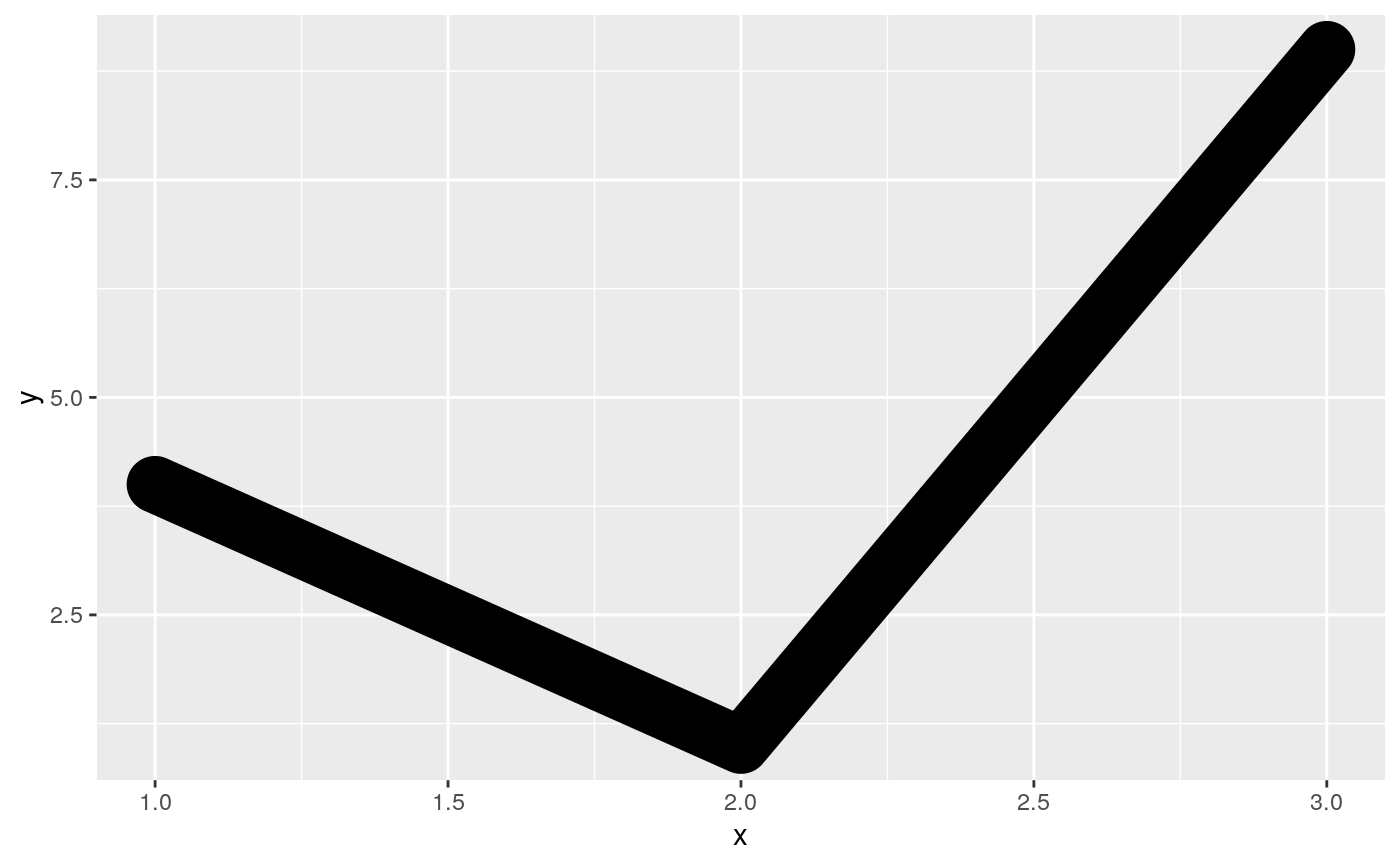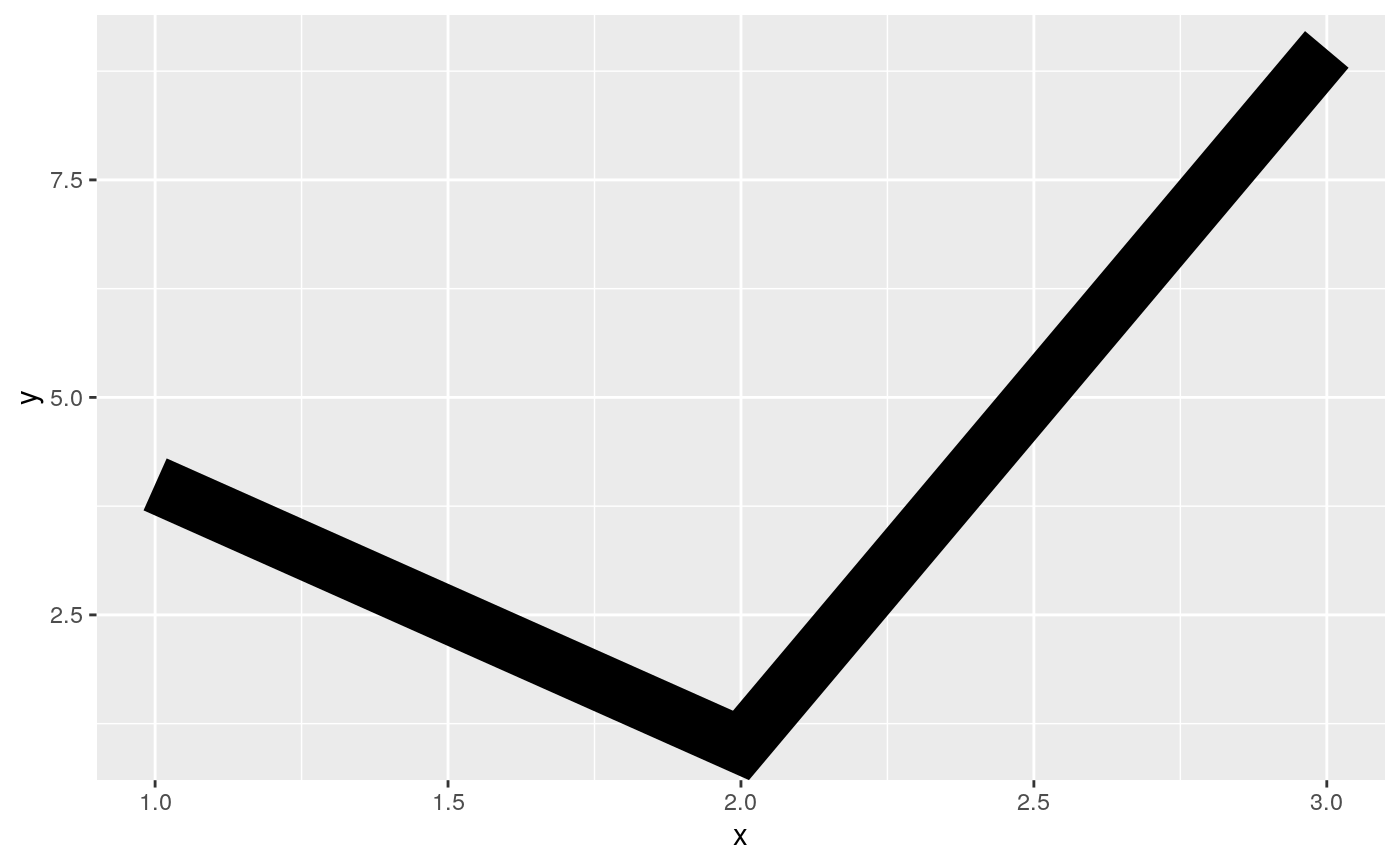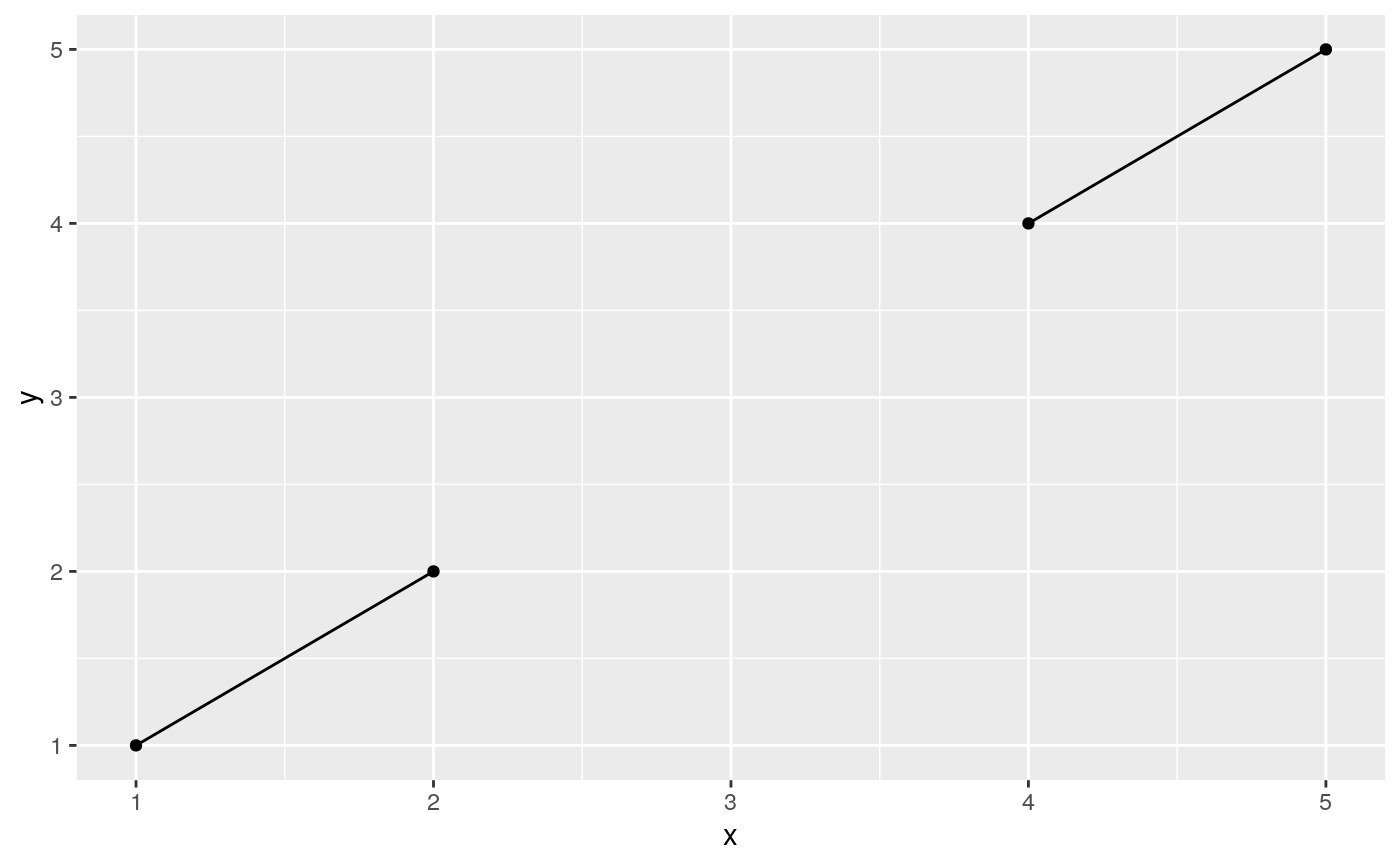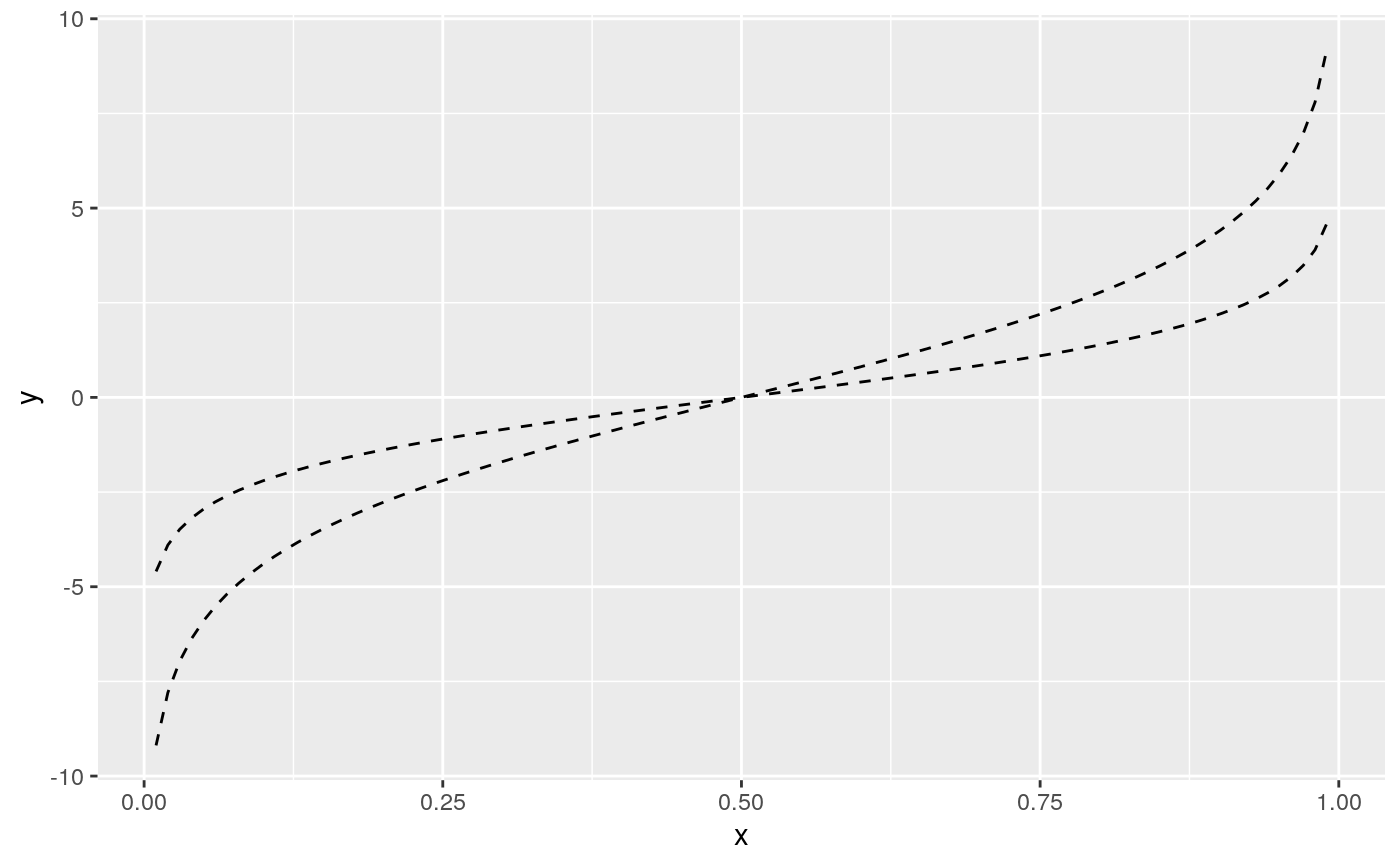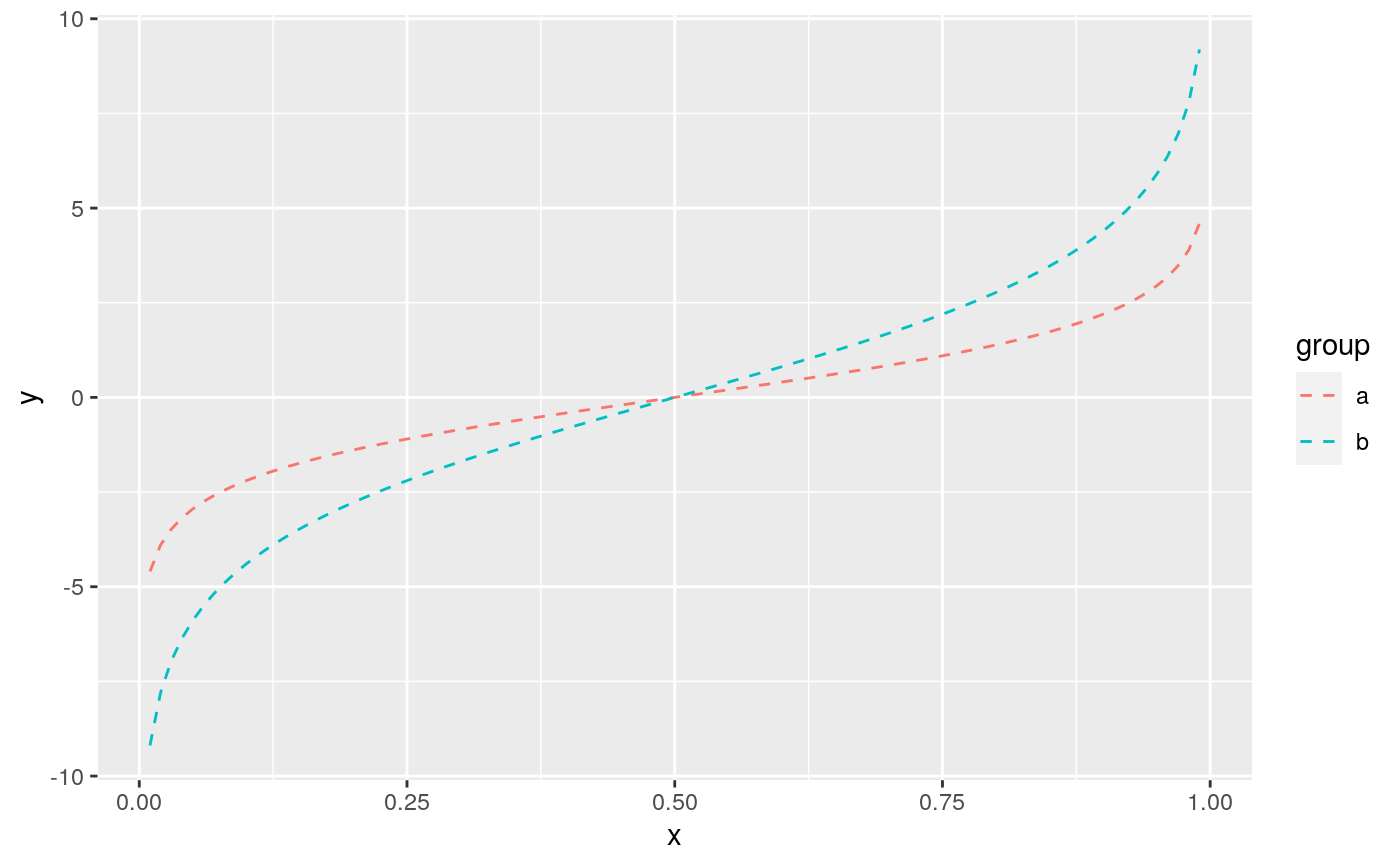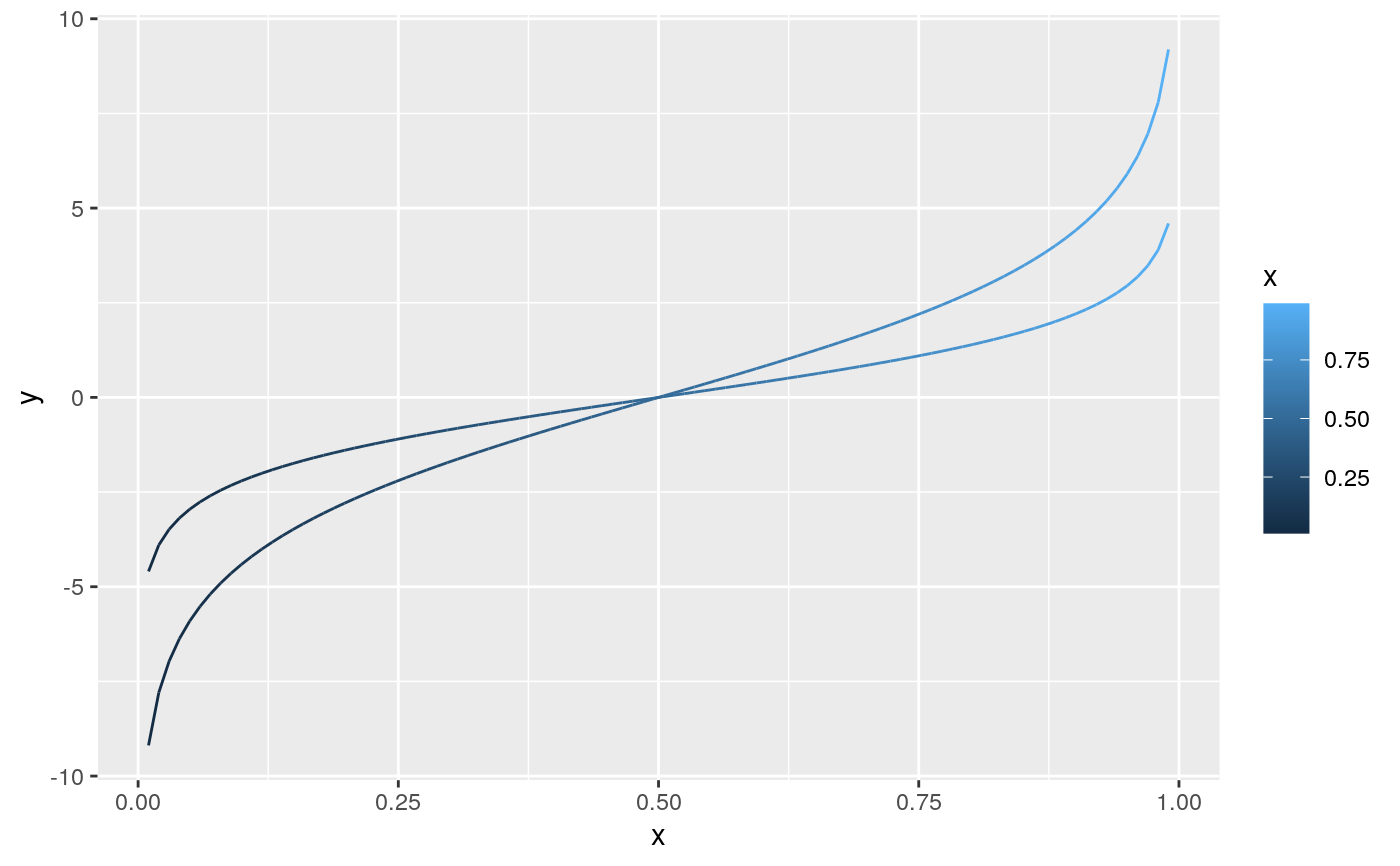geom_path() connects the observations in the order in which they appear
in the data. geom_line() connects them in order of the variable on the
x axis. geom_step() creates a stairstep plot, highlighting exactly
when changes occur. The group aesthetic determines which cases are
connected together.
geom_path( mapping = NULL, data = NULL, stat = "identity", position = "identity", ..., lineend = "butt", linejoin = "round", linemitre = 10, arrow = NULL, na.rm = FALSE, show.legend = NA, inherit.aes = TRUE ) geom_line( mapping = NULL, data = NULL, stat = "identity", position = "identity", na.rm = FALSE, orientation = NA, show.legend = NA, inherit.aes = TRUE, ... ) geom_step( mapping = NULL, data = NULL, stat = "identity", position = "identity", direction = "hv", na.rm = FALSE, show.legend = NA, inherit.aes = TRUE, ... )
Arguments
| mapping | Set of aesthetic mappings created by |
|---|---|
| data | The data to be displayed in this layer. There are three options: If A A |
| stat | The statistical transformation to use on the data for this layer, as a string. |
| position | Position adjustment, either as a string, or the result of a call to a position adjustment function. |
| ... | Other arguments passed on to |
| lineend | Line end style (round, butt, square). |
| linejoin | Line join style (round, mitre, bevel). |
| linemitre | Line mitre limit (number greater than 1). |
| arrow | Arrow specification, as created by |
| na.rm | If |
| show.legend | logical. Should this layer be included in the legends?
|
| inherit.aes | If |
| orientation | The orientation of the layer. The default ( |
| direction | direction of stairs: 'vh' for vertical then horizontal, 'hv' for horizontal then vertical, or 'mid' for step half-way between adjacent x-values. |
Details
An alternative parameterisation is geom_segment(), where each line
corresponds to a single case which provides the start and end coordinates.
Orientation
This geom treats each axis differently and, thus, can thus have two orientations. Often the orientation is easy to deduce from a combination of the given mappings and the types of positional scales in use. Thus, ggplot2 will by default try to guess which orientation the layer should have. Under rare circumstances, the orientation is ambiguous and guessing may fail. In that case the orientation can be specified directly using the orientation parameter, which can be either "x" or "y". The value gives the axis that the geom should run along, "x" being the default orientation you would expect for the geom.
Aesthetics
geom_path() understands the following aesthetics (required aesthetics are in bold):
xyalphacolourgrouplinetypesize
Learn more about setting these aesthetics in vignette("ggplot2-specs").
Missing value handling
geom_path(), geom_line(), and geom_step handle NA as follows:
If an
NAoccurs in the middle of a line, it breaks the line. No warning is shown, regardless of whetherna.rmisTRUEorFALSE.If an
NAoccurs at the start or the end of the line andna.rmisFALSE(default), theNAis removed with a warning.If an
NAoccurs at the start or the end of the line andna.rmisTRUE, theNAis removed silently, without warning.
See also
geom_polygon(): Filled paths (polygons);
geom_segment(): Line segments
Examples
# You can get a timeseries that run vertically by setting the orientation ggplot(economics, aes(unemploy, date)) + geom_line(orientation = "y")# geom_step() is useful when you want to highlight exactly when # the y value changes recent <- economics[economics$date > as.Date("2013-01-01"), ] ggplot(recent, aes(date, unemploy)) + geom_line()# geom_path lets you explore how two variables are related over time, # e.g. unemployment and personal savings rate m <- ggplot(economics, aes(unemploy/pop, psavert)) m + geom_path()# Changing parameters ---------------------------------------------- ggplot(economics, aes(date, unemploy)) + geom_line(colour = "red")# Use the arrow parameter to add an arrow to the line # See ?arrow for more details c <- ggplot(economics, aes(x = date, y = pop)) c + geom_line(arrow = arrow())# Control line join parameters df <- data.frame(x = 1:3, y = c(4, 1, 9)) base <- ggplot(df, aes(x, y)) base + geom_path(size = 10)base + geom_path(size = 10, lineend = "round")base + geom_path(size = 10, linejoin = "mitre", lineend = "butt")# You can use NAs to break the line. df <- data.frame(x = 1:5, y = c(1, 2, NA, 4, 5)) ggplot(df, aes(x, y)) + geom_point() + geom_line()#> Warning: Removed 1 rows containing missing values (geom_point).# \donttest{ # Setting line type vs colour/size # Line type needs to be applied to a line as a whole, so it can # not be used with colour or size that vary across a line x <- seq(0.01, .99, length.out = 100) df <- data.frame( x = rep(x, 2), y = c(qlogis(x), 2 * qlogis(x)), group = rep(c("a","b"), each = 100) ) p <- ggplot(df, aes(x=x, y=y, group=group)) # These work p + geom_line(linetype = 2)# }
